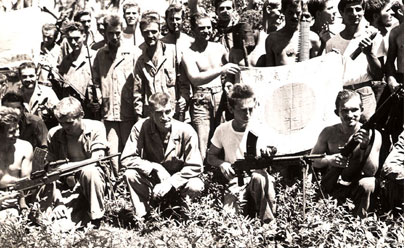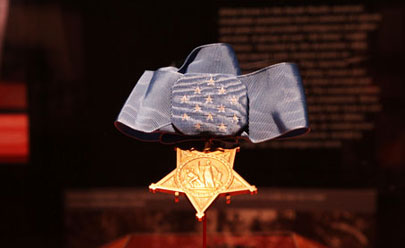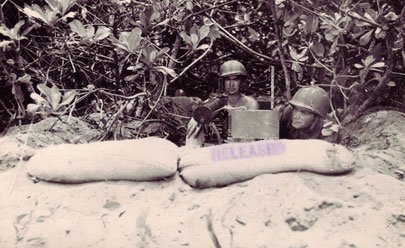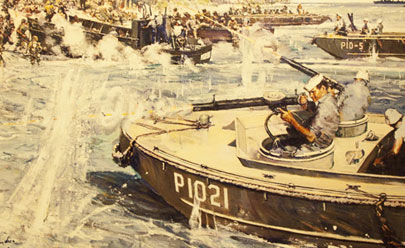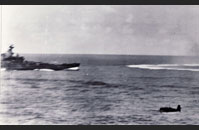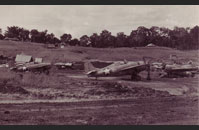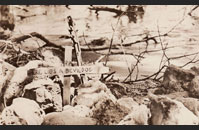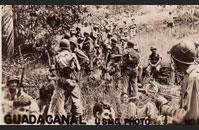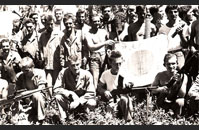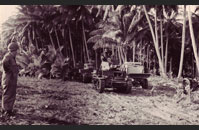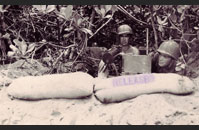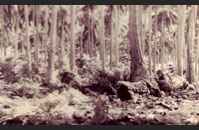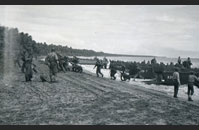FOCUS ON: GUADALCANAL:
Guadalcanal: America’s First Offensive
It was on shaky legs that America began its first ground offensive against the Japanese on 7 August 1942 in the Solomon Islands. Operation Watchtower landed US Marines at Guadalcanal, Tulagi and Florida islands to protect the sea lanes from America to Australia, and with the hopes of using the islands of Guadalcanal and Tulagi as bases for future attacks on the Japanese fortress of Rabaul on the island of New Britain.
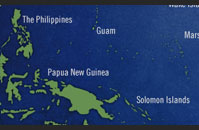 A bird's-eye view of the Pacific, where Operation Watchtower unfolded.
A bird's-eye view of the Pacific, where Operation Watchtower unfolded.
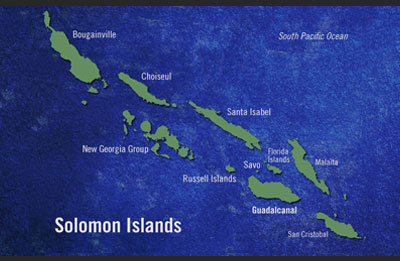 Closer view of the Solomon Islands and Guadalcanal.
Closer view of the Solomon Islands and Guadalcanal.
The marines had landed virtually unopposed on Guadalcanal and quickly captured the Japanese airfield under construction, renaming it Henderson Field. Defending troops had previously fled into the jungle. On Tulagi, marines encountered stiff resistance but succeeded in capturing the island. Despite initial success, events were beginning to take a turn for the worse. General Vandegrift, commander of the newly formed 1st Marine Division, had not expected his division to be called into action until early 1943. To make matters worse, Naval Task Force 61 was forced to withdraw due to the approach of a large Japanese naval force.
The campaign for Guadalcanal became one of the longest in the Pacific and turned into a battle of attrition, as both American and Japanese forces struggled to stay in a fight that stretched the limits of their supply lines. Combat in the Solomons was conducted in every form: on the ground, in the air and at sea. Land battles raged as compartmentalized sea and air battles played out simultaneously. By 9 February, all remaining Japanese forces had been evacuated and the island was declared secure. The Guadalcanal campaign became the first offensive victory for US forces in the war against Japan.
Details:
Click on the buttons below to get more details on the ground, air and sea operations of the Guadalcanal campaign.
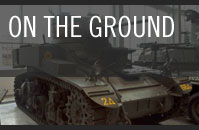

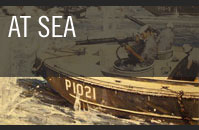
Watch:
Watch the oral histories from the Museum's collection.

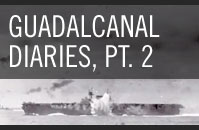

|
Guadalcanal Diaries, Part 1 |
Guadalcanal Diaries, Part 2 |
Richard Greer |
View lectures and panels about Guadalcanal from the 2011 International Conference on WWII.



Richard B. Frank, "Guadalcanal: The First Offensive" |
"Guadalcanal: The First Offensive" Panel Discussion |
"With the Old Breed at Guadalcanal" A Conversation with a Veteran |
Learn More:
View archival photos, download an educational fact sheet and a geography lesson plan and support the Museum's mission by purchasing books and items from the Museum Store.
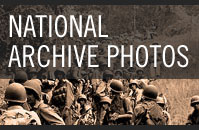
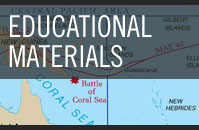

On the Ground:
After the withdrawal of the naval air support from Task Force 61, the marines would be on their own for a week’s time. They improved their defensive position around Henderson Field, while feverishly working to complete it. By 20 August, aircraft from Marine Air Group 23 had arrived and began flying combat operations the next day. The first major Japanese attempt to dislodge the marines from Guadalcanal came on 21 August. A recently landed Japanese assault force of about 900 troops made a nighttime frontal assault against the marines defending Henderson Field. Having previously ambushed a patrol from the Japanese force; intelligence from the Japanese dead alerted the marines to the impending enemy assault.
The Americans made their stand at the Tenaru River, a tidal lagoon separated from the ocean by a sandbar. Just after midnight on 21 August, Japanese troops charged across the sandbar towards the marines on the far bank. Despite devastating losses from machine gun and 37mm anti-tank gunfire, the Japanese kept pressing the attack. By daybreak, hundreds of Japanese dead were scattered across the sandbar. Now supported by tanks and aircraft flying from Henderson Field, the marines counter-attacked the surviving forces on the other side of the river. Aircraft strafed survivors attempting to flee up the beach. Only about thirty Japanese troops escaped.
The annihilation of the Japanese assault force was a major US victory, teaching the marines that the Japanese could be defeated, but they wouldn’t surrender. Japanese forces made several more attempts to land troops and drive US forces off of the island in the coming months, but were unable to do so because of a steady influx of marine and army reinforcements.
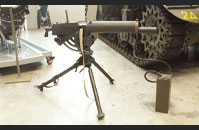 M1917A1 Browning Water-Cooled Machine Gun
M1917A1 Browning Water-Cooled Machine GunDuring the Battle of Lunga Point, 23-26 October, two marine machine gun section sergeants played pivotal roles in stopping the last Japanese push on Henderson Field. John Basilone and Mitchell Paige were both awarded the Medal of Honor for fending off hundreds of Japanese attackers. At one point, Basilone had to reposition his guns because Japanese dead were blocking his field of fire.
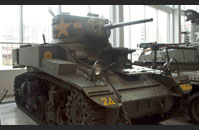 M3A1 Stuart Light Tank
M3A1 Stuart Light TankThe Stuart tank’s 37mm main gun was hardly a match for German tanks, but in the Pacific it was superior to most Japanese tanks. The Stuart’s small size was also well-suited to operating in the dense jungles of Guadalcanal and other islands in the Pacific.
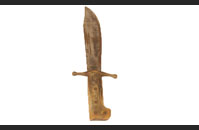 Collins No. 18 Knife
Collins No. 18 KnifeKnown as the “Gung Ho” knife, this fearsome blade was issued exclusively to Marine Raiders fighting in the Guadalcanal Campaign.
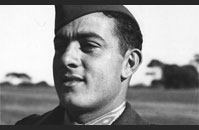 Portrait of Medal of Honor recipient John Basilone. Read his full citation below.
Portrait of Medal of Honor recipient John Basilone. Read his full citation below.
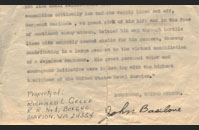 John Basilone’s Medal of Honor Citation
John Basilone’s Medal of Honor CitationFor extraordinary heroism and conspicuous gallantry in action against enemy Japanese forces, above and beyond the call of duty, while serving with the 1st Battalion, 7th Marines, 1st Marine Division in the Lunga Area, Guadalcanal, Solomon Islands, on 24 and 25 October 1942. While the enemy was hammering at the marines' defensive positions, Sgt. Basilone, in charge of 2 sections of heavy machine guns, fought valiantly to check the savage and determined assault. In a fierce frontal attack with the Japanese blasting his guns with grenades and mortar fire, one of Sgt. Basilone's sections, with its gun crews, was put out of action, leaving only 2 men able to carry on. Moving an extra gun into position, he placed it in action, then, under continual fire, repaired another and personally manned it, gallantly holding his line until replacements arrived. A little later, with ammunition critically low and the supply lines cut off, Sgt. Basilone, at great risk of his life and in the face of continued enemy attack, battled his way through hostile lines with urgently needed shells for his gunners, thereby contributing in large measure to the virtual annihilation of a Japanese regiment. His great personal valor and courageous initiative were in keeping with the highest traditions of the U.S. Naval Service.
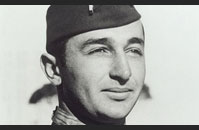 Mitchell Paige’s Medal of Honor Citation
Mitchell Paige’s Medal of Honor CitationFor extraordinary heroism and conspicuous gallantry in action above and beyond the call of duty while serving with the 2nd Battalion, 7th Marines, 1st Marine Division, in combat against enemy Japanese forces in the Solomon Islands Area on October 26, 1942. When the enemy broke through the line directly in front of his position, Platoon Sergeant Paige, commanding a machine-gun section with fearless determination, continued to direct the fire of his gunners until all his men were either killed or wounded. Alone, against the deadly hail of Japanese shells, he manned his gun, and when it was destroyed, took over another, moving from gun to gun, never ceasing his withering fire against the advancing hordes until reinforcements finally arrived. Then, forming a new line, he dauntlessly and aggressively led a bayonet charge, driving the enemy back and preventing a break through in our lines. His great personal valor and unyielding devotion to duty were in keeping with the highest traditions of the United States Naval Service.
In the Air:
The so-called “Cactus Air Force” was a collection of US Navy, Army Air Forces and Marine flyers operating from Henderson Field on Guadalcanal, code-named “Cactus.” Air operations began on 21 August 1942, two weeks after D-Day. The rag-tag flyers operated under the same abysmal conditions as the infantry, and struggled to maintain their aircraft with the bare minimum in spare parts, tools and equipment. Despite those challenges, the Cactus aircraft gained air superiority in the campaign. US airpower denied the Japanese Navy from operating in the daylight. The Japanese were forced to operate at night using fast destroyers to race to the island to land troops and supplies and leave before daylight would reveal them to devastating air attacks.
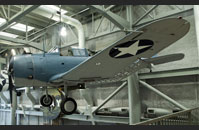 SBD Dauntless Dive Bomber
SBD Dauntless Dive Bomber SBD-3, Bureau Number (BuNo) 06508 was built by Douglas Aircraft Co. at El Segundo, CA and is a combat veteran of the Guadalcanal campaign operating from Henderson Field by Marine Scout Bombing Squadrons (VMSB) 141 and 132. In the spring of 1943, BuNo 06508 was assigned to Navy Bombing Squadron 10 aboard the aircraft carrier Enterprise for a short time before being returned to the States to serve as a trainer at NAS Glenview, Illinois. In November 1944, this aircraft was lost on a training flight in Lake Michigan, where it remained until 1990 when it was recovered by the US Navy and restored to its present condition.
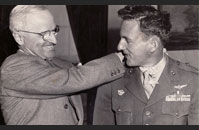 Jefferson DeBlanc and Harry Truman
Jefferson DeBlanc and Harry Truman
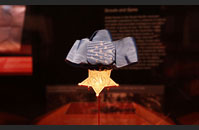 Jefferson DeBlanc’s Medal of Honor
Jefferson DeBlanc’s Medal of HonorUSMC 2nd Lt. Jefferson DeBlanc arrived on Guadalcanal 2 November 1942. On 13 November the newly assigned fighter pilot had shot down three Japanese “Betty” bombers that were attempting to torpedo Allied warships. For his actions DeBlanc was made a section leader. On 31 January 1943, DeBlanc was flying escort for a squadron of Dauntless dive bombers. Early in the flight, he noticed his fuel gauge fluctuating, the result of a leaky fuel tank. Two other pilots in DeBlanc’s section had already returned to base due to mechanical difficulties. DeBlanc stayed with the dive bombers knowing full well that he would not have the fuel to return to Henderson Field. As the aircraft rolled into their dives to attack Japanese troopships, they were jumped by several Japanese fighters. DeBlanc went into action defending the dive bombers. Within minutes DeBlanc had shot down five Japanese planes, making him an ace in a day. The fray mortally damaged DeBlanc’s F4F Wildcat. He bailed out near a Japanese-held island, and after a six- hour swim, he reached land. After being picked up by a native tribe and bartered to another for a ten-pound bag of rice, DeBlanc was in friendly hands and on his way back to Henderson Field. For his actions, Jefferson DeBlanc was awarded the Congressional Medal of Honor.
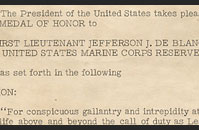 Jefferson’s DeBlanc’s Medal of Honor Citation
Jefferson’s DeBlanc’s Medal of Honor CitationFor conspicuous gallantry and intrepidity at the risk of his life above and beyond the call of duty as Leader of a Section of Six Fighter Planes in Marine Fighting Squadron ONE HUNDRED TWELVE, during aerial operations against enemy Japanese forces off Kolombangara Island in the Solomons Group, 31 January 1943. Taking off with his section as escort for a strike force of dive bombers and torpedo planes ordered to attack Japanese surface vessels, First Lieutenant DeBlanc led his flight directly to the target area where, at 14,000 feet, our strike force encountered a large number Japanese Zeros protecting the enemy's surface craft. In company with the other fighters, First Lieutenant DeBlanc instantly engaged the hostile planes and aggressively countered their repeated attempts to drive off our bombers, persevering in his efforts to protect the diving planes and waging fierce combat until, picking up a call for assistance from the dive bombers under attack by enemy float planes at 1,000 feet, he broke off his engagement with the Zeros, plunged into the formation of float planes and disrupted the savage attack, enabling our dive bombers and torpedo planes to complete their runs on the Japanese surface disposition and to withdraw without further incident. Although his escort mission was fulfilled upon the safe retirement of the bombers, First Lieutenant DeBlanc courageously remained on the scene despite a rapidly diminishing fuel supply and, boldly challenging the enemy's superior number of float planes, fought a valiant battle against terrific odds, seizing the tactical advantage and striking repeatedly to destroy three of the hostile aircraft and to disperse the remainder. Prepared to maneuver his damaged plane back to base, he had climbed aloft and set his course when he discovered two Zeros closing in behind. Undaunted, he opened fire and blasted both Zeros from the sky in short, bitterly fought action which resulted in such hopeless damage to his plane that he was forced to bail out at a perilously low altitude atop the trees on enemy-held Kolombangara. A gallant officer, a superb airman and an indomitable fighter, First Lieutenant DeBlanc had rendered decisive assistance during a critical stage of operations, and his unwavering fortitude in the face of overwhelming opposition reflects the highest credit upon himself and adds new luster to the traditions of the United States Naval Service.
At Sea:
Over a half-dozen major naval engagements occurred in the waters around the Solomon Islands. Nearly every one of them was fought to deny the Japanese from landing and or supplying troops ashore. The waters around the southern end of the New Georgia Sound between Guadalcanal and Savo Islands (also known as “the Slot”) became known as “Iron Bottom Sound” because of the dozens of Japanese and Allied ships that were sunk there. One of these naval battles off the Solomons resulted in the loss of the cruiser Juneau. Among the ship’s company of 700 officers and men were the five Sullivan brothers. Juneau was torpedoed by a Japanese submarine and went down in about 20 seconds. Approximately 100 survivors were lost at sea, exposed to the elements and shark attacks for over a week. When help finally arrived, only 10 men were rescued. The US Armed Forces adopted the sole-survivor policy as a direct result of the death of the Sullivan brothers. The policy states that the sole-surviving sibling of a family is exempt from military service or, if already serving, to be discharged immediately.
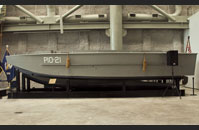 The Landing Craft Personnel (Large) — LCP(L)
The Landing Craft Personnel (Large) — LCP(L)The Landing Craft Personnel (Large), the earliest model of the “Higgins Boat,” lacked the iconic steel ramp that would become its trademark. On 27 September 1942, Coast Guard Signalman 1st Class Douglas A. Munro maneuvered his LCP(L) between Japanese small arms fire and the marines he was extracting from a hostile Guadalcanal beach. Munro took up one of the machine gun positions in the bow of the boat and provided covering fire for the marines as they loaded up their wounded. Just as everyone was aboard and the boat got underway, Munro was killed by Japanese fire. Douglas Munro remains the Coast Guard’s only Medal of Honor recipient since the branch’s inception in 1790.
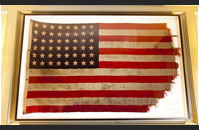 USS Crescent City Flag
USS Crescent City FlagThis 48-star flag saw the landings and combat action at Guadalcanal, flying from the mast of the USS Crescent City (APA-21) until it earned a well-deserved replacement in December 1942.
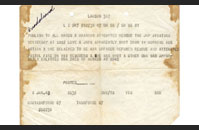 USS Lamson (DD-376) Radio Message
USS Lamson (DD-376) Radio Message
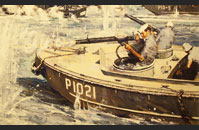 Painting of Douglas Munro
Painting of Douglas Munro
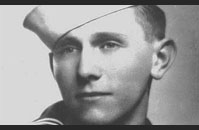 Douglas Munro’s Medal of Honor Citation
Douglas Munro’s Medal of Honor CitationFor extraordinary heroism and conspicuous gallantry in action above and beyond the call of duty as Officer-in-Charge of a group of Higgins boats, engaged in the evacuation of a battalion of marines trapped by enemy Japanese forces at Point Cruz, Guadalcanal, on September 27, 1942. After making preliminary plans for the evacuation of nearly 500 beleaguered marines, Munro, under constant risk of his life, daringly led five of his small craft toward the shore. As he closed the beach, he signaled the others to land, and then in order to draw the enemy's fire and protect the heavily loaded boats, he valiantly placed his craft with its two small guns as a shield between the beachhead and the Japanese. When the perilous task of evacuation was nearly completed, Munro was killed by enemy fire, but his crew, two of whom were wounded, carried on until the last boat had loaded and cleared the beach. By his outstanding leadership, expert planning, and dauntless devotion to duty, he and his courageous comrades undoubtedly saved the lives of many who otherwise would have perished. He gallantly gave up his life in defense of his country.
Images of the Guadalcanal Campaign Courtesy of the National Archives:
Educational Materials:
Learn more about Women in World War II by reading and downloading the Guadalcanal Fact Sheet and Pacific Geography Lesson Plan.

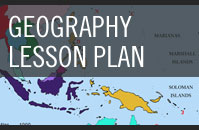
Learn More with Items from the Museum Store:
Proceeds from Museum Store purchases fund the continuing educational mission of The National WWII Museum.
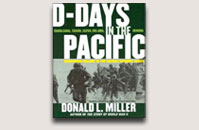
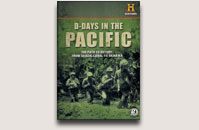
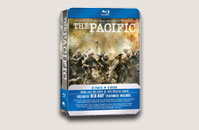
|
D-Days in the Pacific |
D-Days in the Pacific DVD |
The Pacific Blu-Ray |
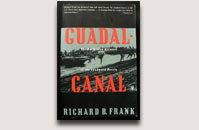

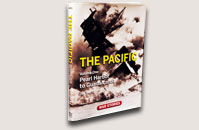
|
Guadalcanal: The Definitive Account |
Strong Men Armed: The United States Marines Against Japan |
The Pacific: Volume One — Pearl Harbor to Guadalcanal |

